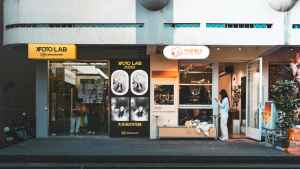Amazon Seller Central Fees: Understanding the Costs
Introduction
Step into the bustling marketplace of Amazon, where millions of sellers vie for the attention of eager shoppers. As a savvy entrepreneur entering this digital arena, it’s imperative to navigate the realm of Amazon Seller Central fees. Understanding these costs is crucial for planning your business strategy, setting competitive prices, and maximizing your bottom line. In this comprehensive guide, we’ll delve into the intricacies of Amazon’s fee structure, arming you with the knowledge to make informed decisions and optimize your sales performance.
Section 1: Understanding Amazon’s Fee Structure
Amazon Seller Central operates on a fee-based model, meaning sellers are charged a percentage of their sales and incur additional expenses for various services. These fees vary depending on factors such as the product category, fulfillment method, and selling plan chosen. Let’s dissect the key components of Amazon’s fee structure:
1.1. Referral Fees
The bread and butter of Amazon’s revenue stream, referral fees are a percentage charged on every item sold through the platform. These fees range from 6% to 20%, depending on the product category. For example, electronics typically incur a 15% referral fee, while clothing falls under the 17% bracket. Referral fees cover the cost of hosting your products on Amazon’s website, processing orders, and providing customer service.
1.2. FBA Fees
Fulfillment by Amazon (FBA) is a service that takes the hassle of storage, packaging, and shipping your products off your shoulders. While convenient, FBA comes with additional fees:
– FBA Fulfillment Fees: These fees vary based on the product’s size, weight, and storage requirements. They cover the cost of Amazon storing and picking your items, packing them, and shipping them to customers.
– FBA Referral Fees: As with FBM, Amazon charges FBA sellers a referral fee for each item sold. However, the rates for FBA referral fees are typically lower than for FBM, ranging from 6% to 15%. This is because Amazon takes on the burden of fulfillment, reducing its overall costs.
1.3. Other Fees
Beyond referral and FBA fees, Amazon charges a variety of other fees, including:
– Closing Fees: A small fee charged when an order is completed.
– Shipping Fees: If you opt for FBM (Fulfillment by Merchant), you’ll be responsible for the cost of shipping your products to customers.
– Storage Fees: If your products are stored in Amazon’s fulfillment centers for more than a year, you may incur storage fees.
– Return Processing Fees: Amazon charges a fee for processing customer returns.
Understanding Amazon Seller Central Fees: A Comprehensive Guide
Navigating the Complexities of Seller Fees on Amazon
As an Amazon seller, understanding the various fees associated with Seller Central is crucial for your business’s success. These fees can impact your profitability and overall strategy. This comprehensive guide will provide you with a detailed breakdown of Amazon’s fee structure, helping you make informed decisions and optimize your revenue.
Amazon’s Fee Structure: A Breakdown
Amazon charges a range of fees to sellers, each designed to cover a specific aspect of the selling process. These fees can be broadly categorized into the following types:
– Selling Fees: These fees are charged when you list and sell products on Amazon. They vary depending on the product category and selling method.
– Fulfillment Fees: These fees cover the costs of storing, picking, packing, and shipping your products. They include fees for Amazon’s Fulfillment by Amazon (FBA) service and seller-fulfilled orders.
– Referral Fees: Amazon charges a percentage of each sale as a referral fee. This fee compensates Amazon for providing the platform that facilitates the transaction.
– Advertising Fees: Amazon offers various advertising options to sellers, including sponsored products and display ads. These fees are charged on a pay-per-click or pay-per-impression basis.
– Other Fees: There are a number of other potential fees that sellers may encounter, such as fees for product returns, late shipments, and account closures.
Calculating Your Total Fees
The total fees you’ll pay on Amazon will vary depending on your business model, product category, and selling volume. To calculate your estimated fees, consider the following factors:
– Product Category: Different product categories have different selling fees. For example, clothing and accessories typically have lower selling fees than electronics or home appliances.
– Selling Method: Selling through FBA generally incurs higher fulfillment fees than seller-fulfilled orders. However, FBA can also reduce your shipping and customer service costs.
– Sales Volume: Amazon offers tiered pricing for selling fees. The more you sell, the lower your fees will be as a percentage of sales.
Strategies for Optimizing Your Fees
While Amazon’s fees are non-negotiable, there are some strategies you can employ to minimize their impact on your profitability:
– Choose the Right Product Category: Research different product categories to find ones with lower selling fees.
– Optimize Your Product Listings: High-quality product listings can increase your sales and reduce the likelihood of returns, which can lead to lower fees.
– Negotiate with Amazon: If you’re a high-volume seller, you may be able to negotiate lower fees with Amazon.
– Use Amazon’s Fee Calculator: Amazon provides a fee calculator that allows you to estimate your fees based on your product category and selling method.
By understanding Amazon’s fee structure and implementing these optimization strategies, you can effectively manage your expenses and maximize your earnings as an Amazon seller. 5. Additional Seller Central Fees to Consider
In addition to the basic fees outlined above, Amazon also charges a variety of other fees that sellers need to be aware of. These fees can vary depending on the type of product being sold, the seller’s account type, and the shipping method used.
Some of the most common additional fees include:
Referral fees: These fees are charged as a percentage of the total sale price of an item. The referral fee rate varies depending on the product category, but it typically ranges from 6% to 15%.
Closing fees: These fees are charged when an item is sold. The closing fee is typically a flat fee of $0.99 per item.
Storage fees: These fees are charged for storing inventory in Amazon’s fulfillment centers. Storage fees are based on the size and weight of the inventory, and they can vary depending on the time of year.
Shipping fees: These fees are charged for shipping items to customers. The shipping fee is based on the weight and size of the item, as well as the shipping method used.
6. How to Minimize Amazon Seller Central Fees
While Amazon Seller Central fees can be a significant expense, there are a number of things that sellers can do to minimize these fees. Here are a few tips:
Choose the right product categories: The referral fee rate varies depending on the product category. By choosing product categories with lower referral fees, you can save money on fees.
Optimize your product listings: Well-optimized product listings can help you increase your sales, which can lead to lower fees. Make sure your product listings are complete and accurate, and use high-quality photos and videos.
Negotiate with Amazon: If you are a high-volume seller, you may be able to negotiate lower fees with Amazon. Contact your Amazon account manager to discuss your options.
Use Amazon’s fulfillment services: Amazon’s fulfillment services can help you save money on storage and shipping fees. By using Amazon’s fulfillment services, you can also take advantage of Amazon’s Prime shipping program, which offers free two-day shipping to Prime members.
7. Conclusion
Amazon Seller Central fees can be a significant expense, but there are a number of things that sellers can do to minimize these fees. By understanding the different types of fees, choosing the right product categories, optimizing your product listings, and using Amazon’s fulfillment services, you can save money on fees and increase your profits.
If you are considering selling on Amazon, it is important to factor in the costs of Seller Central fees. By understanding the different types of fees and how to minimize them, you can make an informed decision about whether or not selling on Amazon is right for you.
Call to Action
If you are interested in learning more about Amazon Seller Central fees, or if you need help optimizing your product listings, I encourage you to contact me. I have over 10 years of experience selling on Amazon, and I can help you save money on fees and increase your profits.






